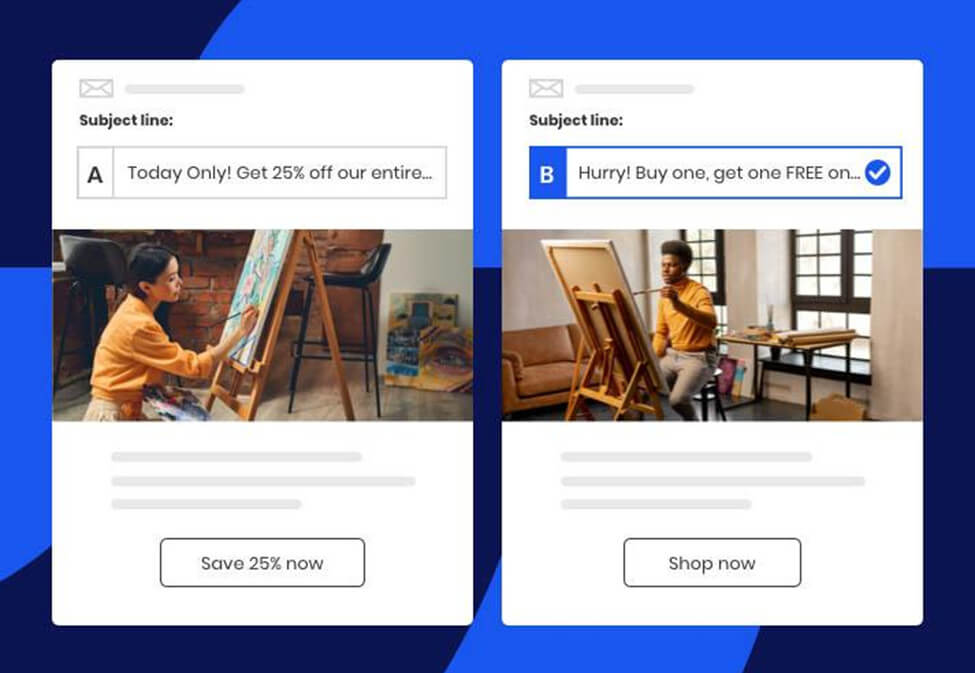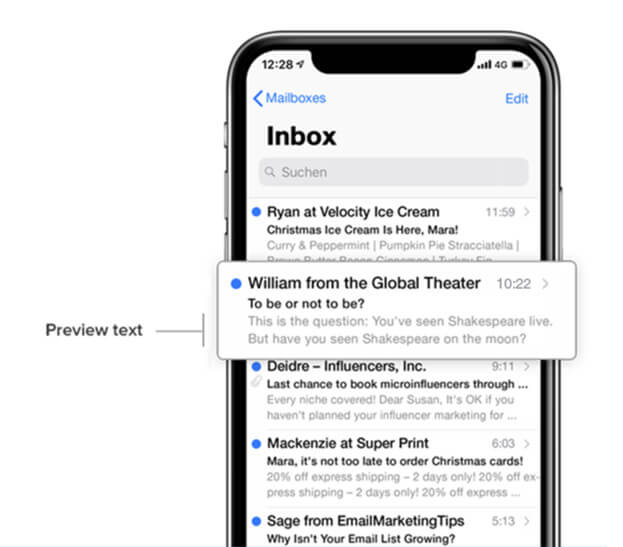
How to Build a Fresh Email Marketing Process for Increased Deliverability & Results
If you feel like you’re seeing a drastic increase in volume in both your professional and personal email inboxes, you probably aren’t imagining things.
The global email marketing market was valued at $7.5 billion in 2020 and is projected to increase by a further $10 billion in the following seven years.
This growth presents some challenges for those who use email as part of their overall marketing strategy. For starters, it means more email fatigue from consumers and fiercer competition to reach (and remain in) consumers’ inboxes.
But it also presents opportunities for those who know how to leverage the growth to their advantage. It’s time to get strategic about your entire email marketing plan.
In this article, we’ll walk you through how to think about an engaging and tactical email marketing strategy that will keep unsubscribes and bounces under control.
Table of contents
How to create email campaigns that align with your marketing strategy
While email is one channel through which you deliver relevant messages and offers, it shouldn’t live in a silo. Email should be a sub-strategy of a marketing plan that aligns with overall marketing and business goals.
As we mentioned before, brand communications inundate consumer inboxes. While it’s important to stay top of mind, every email you send must have a purpose. Pointless or irrelevant emails can frustrate and annoy your target audience.
In order to make sure you’re sending purposeful emails, your team must map each one back to your marketing strategy. It’s also important that every email has a clear CTA.
Readers should understand exactly why they have received it and what you want them to do once they’ve opened and read it.
How to build email campaigns that inspire action
So, you’ve mapped out your goals and aligned your messaging. How can you ensure the emails you send get read?
Brands that want to stand out in inboxes should focus on personalization beyond first name merge tags. Gone are the days of batch-and-send emails to a single list of subscribers. It’s now about tailoring the whole email experience.
A prospect who has browsed but never bought should have an entirely different email experience with your brand than a loyal, repeat purchaser.
Segmentation is table stakes—customers won’t take action on an email that is irrelevant to them. Receiving an irrelevant email might annoy them enough to make them hit unsubscribe.
First and foremost, your strategy should map out multiple customer journeys unique to your business. Within each segment, get to know your customers even better and further tailor their experience.
These are all important breadcrumbs to figuring out what matters to your customer base and how they interact with your brand. Noting them and enhancing future campaigns will allow you to reach them at the right time, in the right way, inspiring them to act on a CTA.
We’ll go into more detail on how to segment your list so content stays relevant in a moment. First, how can you ensure your email reaches our customers’ inboxes?
What is email deliverability?
We trust your marketing team is thinking about things like interesting email subject lines and click-worthy copy. A less glamorous component of email marketing is crucial but often overlooked: email deliverability.
In its simplest form, email deliverability is the likelihood that your emails are actually reaching your customers’ inboxes. Sounds easy enough, but many factors contribute to whether or not your emails will arrive.
As many as 20% of all emails either go to spam or remain undelivered. Email systems are working overtime to enhance their users’ experience. This means a lot of emails are ending up in spam unintentionally.
You want to make sure you’re not getting filtered or dropped completely by having poor email marketing practices in place.
Email deliverability comprises trustworthiness, reputation, authority, and the content itself. Email servers assess all of this as emails make their way to users’ inboxes and filter out those that don’t make the cut.
Some of these things you can control, such as the content. You can also strengthen your emails’ trustworthiness with a few technical tweaks (more on that later). But until you make these changes, emails are subject to gateways and filters along their journey, and they may be stopped along the way without your consent.
While the goal of every marketer is to get to a deliverability score of 100%, most often, it’s subject to the email platform you choose to send from. Aim for at least a deliverability score of 95% or higher.
Here are a few common issues that may impact your email deliverability.
- Inconsistent send schedule. If you send high volumes of emails erratically, this may impact your email deliverability. Email servers may assume you’re a spam bot and block your email from reaching the user’s inbox.
- Single opt-in. Have you ever unsubscribed from an email list and uncertainly hovered over “I never signed up for these emails” in the exit survey? It can be forgettable when brands use single opt-in to add subscribers to a regular email list (often through a lead generation offering or promotional offer). This leads to high reports of spam.
- You haven’t purged your list. Deleting a chunk of your email list after working so hard to build it feels unbearable. However, removing people who never open your emails benefits your send credibility.
We’ve looked at some common email deliverability issues. Now let’s learn more ways to fix deliverability and how to get subscribers to open the emails that reach them.
How to improve your email marketing to boost trustworthiness and deliverability
As we’ve seen, there are some easy habits to fall into that hurt your chances of emails reaching inboxes. Luckily, there are techniques to prevent deliverability failures and increase your email’s trustworthiness.
Start by reversing the issues above:
- Stick to a consistent send schedule so people— and servers—know roughly when to expect to hear from you. Avoid sending high-volume emails sporadically.
- Choose a double opt-in, or confirmed opt-in, to reduce “I never signed up for these emails” unsubscribes that harm your email deliverability rate.
- Purge your list regularly (quarterly if you can). Remove anyone who hasn’t opened or clicked your emails over the past several months.
Here are a few more things to consider when working to improve your email marketing.
Show that you’re sending from a trustworthy source
If you’re struggling with a low deliverability rate despite changing the issues above, it may require some technical setup to show that your organization is a trustworthy sender.
DomainKeys Identified Email (DKIM) protects emails from being hijacked en route to inboxes. Dishonest parties can intercept emails and change the content before putting it back into circulation. DKIM coding in email headers communicates to email servers that the content has not been changed along its way.
Sender score is a technical metric that will impact your organization’s trustworthiness. Sender Score assigns a number to every outgoing email server. The score is calculated by using traditional email metrics, including spam complaints and backlist entries, and ranks senders on a scale of 0-100 (the higher, the better). You can learn your sender score and how to improve it.
While you may know your organization isn’t trying to hack or scam anyone, these tools help ensure that email servers understand that, too.
Segment your lists
As previously mentioned, it’s crucial to segment your email marketing lists.
The best way to drive engagement and action through your email marketing is to give the people what they want. For some, that will be content. For others, it will be discount or referral codes.
So how do you know which messages to send to which customers?
Tailor your communication to users based on where they are in the customer journey. In order to do that, you need to segment customers based on their journey stage.
You can begin with a simple segmentation like this:
- Awareness stage. Customers who are learning about your brand and your offering.
- Consideration stage. Customers who have shown interest in your brand by opening emails, spending time on your website, contacting you about products, etc.
- Decision stage. Customers who have done the research and are ready to buy.
- Retention stage. For existing customers who have made a purchase.
- Advocacy stage. Customers who are repeat purchasers and brand advocates.
You can then segment your list further by demographics and psychographics. For example, you may send out a promotional email to customers in your awareness segment that live in the US in time for an American holiday, such as Independence Day. This email might look entirely different to customers in your awareness stage in the UK.
For longer sales funnels, you may need to nurture your leads with social proof, such as detailed customer testimonials or product reviews and demos.
Make it easy to unsubscribe or change preferences
There is no quicker way to burn an email bridge than making someone jump through hoops to change their preferences or unsubscribe.
It may seem counterintuitive: why would you make it easy to unsubscribe?
Unsubscribing doesn’t necessarily mean the prospect is completely uninterested in your brand. They may just not have seen enough value in your emails.
So, if you make things difficult, or worse, continue to send emails after they’ve tried to unsubscribe, they’re likely to remember you—and not for the right reasons.
Make your content count
Once your email makes it into someone’s inbox (hooray!), we want to make sure they open it.
That begins with an engaging, goldilocks subject line—not too long and not too short.
Here we return to our point about personalization. Once again, we’re talking about deep personalization: the kind that speaks to users’ behaviors, needs, desires and gets them to engage with your email content.
Emails with personalized subject lines generate 26% higher open rates. That’s a significant amount and a technique worth acknowledging.
To optimize your emails for the highest open rates, you’ll want to A/B test subject lines to see what type of messaging performs best with different audience segments. Many of the top email marketing platforms offer A/B testing as part of their paid plans.

And with such an easy tactic, why run subject line tests for every email campaign? Levels of confidence can occur mere hours after the initial deployment to your control group. Optimizing quickly can mean lifts in open rates,click-throughs, and ultimately, conversions.
By testing different subject lines, you can learn the best fit messaging strategies and use this knowledge in other areas of your marketing strategy, such as in ads.
For example, if you learned that your millennial audience base in the awareness stage responds well to scarcity CTAs, you can try to implement more of these in your next social media campaign.
You should also use preview text to your advantage. It’s an often neglected part of an email, but it can act as a way of valuing your audience’s time by letting them know what’s inside.

In terms of email copy, short and to-the-point tends to perform best for most marketing emails.
In fact, data from Boomerang found that emails of 50-125 words yielded the best response rates. What works best for your brand will come out in A/B testing, but short (not too short) emails are a good place to start.
Try to keep your CTA above the fold or close to it. Your subscribers shouldn’t have to scroll too many times to see what it is you want them to do.
For just about any marketing campaign strategy, you’ll want to have a mix of purposes. For example, you’ll want to send out some emails for awareness (e.g., “Did you know we also do this?”), some to educate subscribers about your brand (e.g., “Learn more about our origin story”), and some to encourage advocacy (e.g., “10% off for you and a friend”).
You’ll want to avoid sending email after email asking subscribers to buy the same product is unlikely to win your brand many fans. Diversify your content to appeal to your customer segments. A helpful question to ask of every email you send, how is this helpful to the reader?
How to measure the success of your email marketing
The good news is email marketing is quite straightforward to measure. Keep in mind that benchmarks for these metrics may look different depending on your industry. Campaign Monitor released a benchmarks report for 2021, including global averages and industry-specific averages. We’ll refer to the global averages in this article, but you can find metrics specific to your industry in their report.
Here are some common email marketing metrics you’ll want to track regularly.
- Bounce rate. This is the percentage of emails that have not successfully reached their intended recipients. You want to keep this rate as close to zero as possible to improve deliverability. As we mentioned above, you can improve your bounce rate by using double opt-in, cleaning your list regularly, and authenticating your domain.
- Open rate. This is the percentage of recipients who open a given email. Open rate is a great metric for understanding how well your subject lines are performing. You’ll want to check for your industry specifically, but according to Campaign Monitor the average email open rate for all industries is 18%.
- Click-through rate (CTR). This is the percentage of people who clicked on at least one link in your email. This can help you understand if your CTAs or the links you’re sharing are relevant or interesting to your email audience. The overall average CTR is a low 2.6%. This is a number to consider when calculating how big your list needs to be before you see any impact on your business.
- Click-to-open rate (CTOR). This metric compares the number of unique clicks to unique opens. Like click-through rate, it’s a good indicator of effective messaging, design, and recipient interest. The average CTOR is 14.1%.
- Conversion rate/ROI. This number (or dollar amount, depending on whether you’re asking readers to click/read something or purchase a product) indicates how many email recipients acted on your CTA.
- Order value. This number tells you how much a user spent resulting from a specific email message or campaign. It’s handy to know which of your segments responded in the highest-value way to your campaigns.
- Percentage of unsubscribes (UNSUB). This number indicates how many people unsubscribed from any given email message or campaign. It’s worth tracking to see which campaigns didn’t resonate, so you can analyze them and avoid these actions in future outreach efforts.
- List growth. You may want to set targets around list growth based on your chosen timeline (e.g., “We want to grow our list by 5% this month”) or based on a campaign (e.g., “We want to grow our list by 15% with our new ebook”).
When you begin to understand what’s working and what isn’t, you’re likely to see incremental revenue increases. This is down to the meticulous work of continuous optimization. Little learnings lead to small changes that can lead to exponential growth.
Knowing this, what do you leave on the table if you’re not experimenting, testing, and updating your email content and strategy?
Wrapping up
Email marketing is set for growth in the coming years. But because ever-growing inboxes are overwhelming consumers, only the most relevant and strategic brands will survive the unsubscribes.
Every email you send should serve a purpose and align with your overall marketing strategy. It’s critical to remember that your audience comprises many different personalities with varying desires and needs. Be sure to account for all of these differences as best you can by segmenting and then personalizing your brand’s emails.
As with any marketing strategy, be sure to test and measure often and optimize your campaigns based on your findings.
READY TO PROVIDE A BETTER POST-CLICK EXPERIENCE?
Get insights and tips to drive more business from less ad spend, more profit from less cost, and more customer value from less churn.